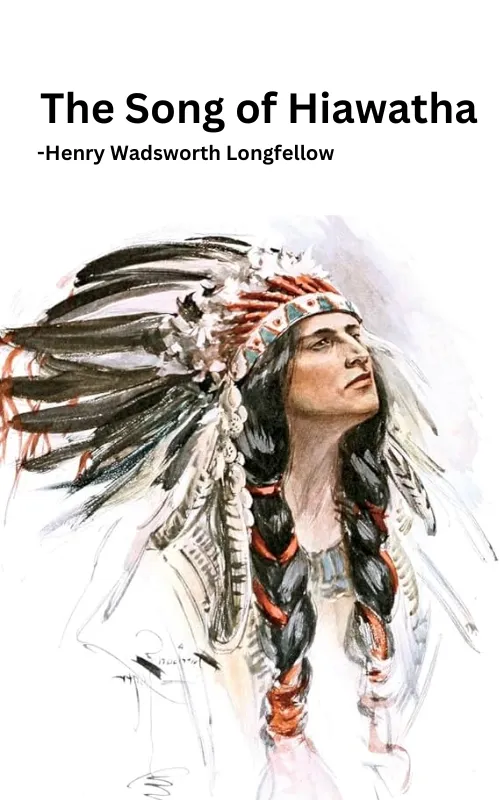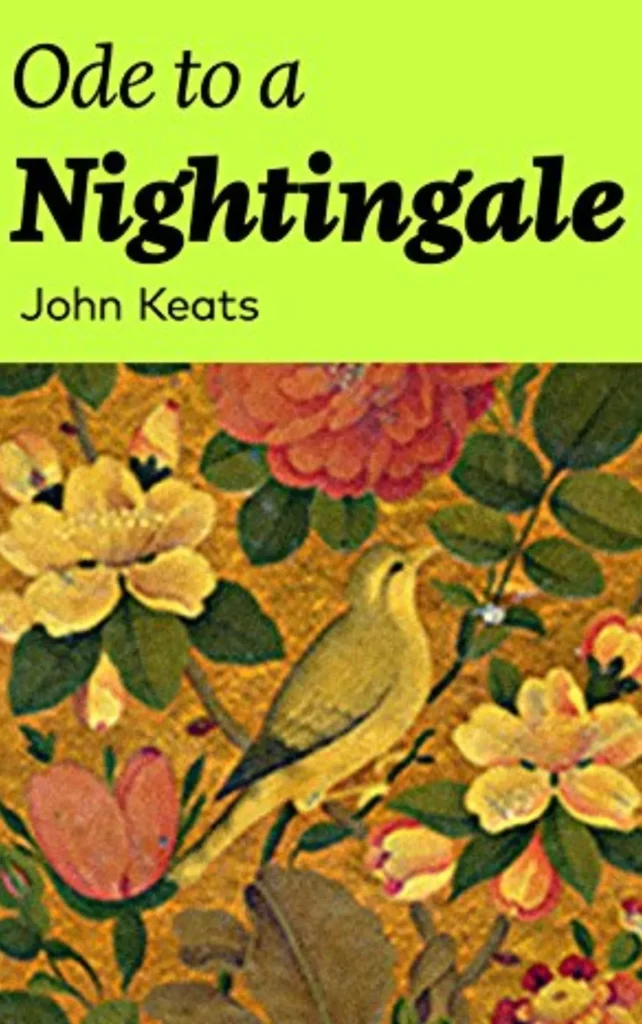About Poem: The Song of Hiawatha
| Poem Title | The Song of Hiawatha |
| Author | Henry Wadsworth Longfellow |
| Date written | 1855 |
| Date published | 1855 |
| Type of poem | Epic poem |
| Form | Narrative poem written in trochaic tetrameter |
| Structure | 22 chapters, divided into two parts |
| Genre | An epic poem with elements of folklore and legend |
| Setting | The Great Lakes region of North America |
| Main Character | Hiawatha, a legendary Native American hero |
| Themes | Mythology, nature, love, the human spirit, and culture |
| Tone | Romantic, epic, and often melancholic |
| Narrative Style | Third-person omniscient perspective |
| Key Message | Celebrates Native American culture, nature, and the human spirit. |
| Influences | Draws inspiration from Native American legends and folklore |
| Literary Techniques | Utilizes anapestic tetrameter and alliteration |
Themes: The Song of Hiawatha
The themes of “The Song of Hiawatha” by Henry Wadsworth Longfellow
- Nature and Spirituality ➤ The poem explores the deep connection between nature and the spiritual world.
- The Hero’s Journey ➤ It tells the story of Hiawatha’s adventures and growth as a hero.
- Unity and Community ➤ The poem emphasizes the power of people coming together for a common purpose.
- Romantic Love ➤ It touches on the theme of romantic love and relationships, especially Hiawatha’s love for Minnehaha.
- Cultural Preservation ➤ The poem highlights the importance of preserving and passing down Native American culture and heritage.
The Song of Hiawatha Summary & Analysis
The Song of Hiawatha” is an epic poem written by Henry Wadsworth Longfellow, first published in 1855. It is a narrative poem that draws upon the legends and folklore of the Ojibwa (Chippewa) and other Native American tribes. The poem is divided into twenty-two cantos, and each canto tells a part of the story of Hiawatha, a Native American hero, and his adventures. Below is a detailed stanza-wise summary of this renowned poem:
Cantos 1
The poem begins with an introduction to the Native American hero Hiawatha, whose name means “He Makes Rivers.” Hiawatha is portrayed as a wise and noble figure who brings peace and prosperity to his people. The canto sets the tone for the epic, emphasizing Hiawatha’s role as a cultural and spiritual leader.
Cantos 2
This canto describes Hiawatha’s early years and his mother, Wenonah, who dies in childbirth. Raised by Nokomis, his grandmother, Hiawatha grows up in the wilderness, gaining knowledge of the natural world and its creatures.
Cantos 3
Hiawatha’s childhood is further explored, highlighting his lessons from animals and the environment. The canto reinforces his spiritual connection to nature and the mystical elements of his upbringing.
Cantos 4
In this canto, Hiawatha’s father, Mudjekeewis, is introduced as the West Wind. Their initial meeting is confrontational, but it evolves into a bond of mutual respect and understanding. Mudjekeewis imparts his wisdom to Hiawatha.
Cantos 5
Hiawatha embarks on a spiritual journey of fasting and self-discovery. He goes into the wilderness to fast and seek visions. During this time, he encounters mystical beings, such as Pau-Puk-Keewis, and receives visions that will guide his destiny.
Cantos 6
Hiawatha’s return from his fasting reveals his quest for unity and friendship among the various tribes. He seeks to unite and strengthen his people, calling for a council of tribes.
Cantos 7
In this canto, Hiawatha sets out on a voyage across the waters, meeting and gaining the support of different tribes along the way. The poem explores themes of exploration, diplomacy, and unity among diverse cultures.
Cantos 8
Hiawatha teaches his people the art of fishing, providing for them and ensuring their well-being. This canto highlights his role as a provider and leader, as well as his dedication to his people’s welfare.
Cantos 9
Hiawatha’s encounter with the Pearl-Feather, a mystical being, showcases his courage and resourcefulness. He defeats this powerful adversary, which symbolizes the triumph of good over evil and the hero’s indomitable spirit.
Cantos 10
Hiawatha falls in love with Minnehaha, a beautiful maiden, and they court and marry. Their love story is a central element of the poem, and their union represents the coming together of two different tribes in peace.
Cantos 11
Hiawatha and Minnehaha’s wedding feast is a joyous celebration that symbolizes the harmony and unity that Hiawatha has brought to his people. The wedding feast is a symbol of hope, prosperity, and unity.
Cantos 12
Hiawatha’s encounter with the Son of the Evening Star, who prophesizes his future and his role as a great leader, adds a supernatural and mystical dimension to the poem.
Cantos 13
Hiawatha brings the gift of agriculture to his people, teaching them to plant and cultivate corn. This canto highlights his role as a provider and the development of agricultural practices.
Cantos 14
Hiawatha introduces the art of picture-writing, enabling his people to communicate and record their history and knowledge. This advances their cultural and intellectual development.
Cantos 15
The canto mourns the loss of Minnehaha, who dies in a tragic and touching scene. Hiawatha’s grief is a powerful portrayal of love and loss, and it deepens his character.
Cantos 16
Hiawatha confronts Pau-Puk-Keewis once more, a cunning and mischievous character, leading to a contest of wits and strength. This canto explores themes of perseverance and wisdom.
Cantos 17
The canto continues Hiawatha’s pursuit of Pau-Puk-Keewis, as he seeks to bring this troublesome figure to justice. It highlights Hiawatha’s determination and resourcefulness.
Cantos 18
Kwasind, a powerful but somewhat clumsy figure, meets his end in this canto. His death underscores themes of sacrifice and the cycle of life.
Cantos 19
Hiawatha’s encounter with the ghosts of the departed serves as a reflection on mortality and the spirit world. It explores themes of memory and the continuity of life beyond death.
Cantos 20
The people experience a period of famine, and Hiawatha uses his magical powers to help them. This canto emphasizes Hiawatha’s role as a provider and a spiritual guide.
Cantos 21
This canto introduces the arrival of European settlers, marking a significant shift in the narrative. Hiawatha prophesies the challenges and changes that the future will bring.
Cantos 22
The epic concludes with Hiawatha’s farewell to his people as he departs in a birch canoe. He leaves them with words of wisdom and the promise of his return in times of need.
FAQs: The Song of Hiawatha
What is the story of The Song of Hiawatha?
The Song of Hiawatha is a story about an Ojibwe hero named Hiawatha who defeats evil, brings peace and prosperity to his people, and experiences the beauty of nature and love.
Is Hiawatha a real story?
Hiawatha was a real person, but the story in Longfellow’s poem is not entirely true.
What is the message of Hiawatha?
The message of Hiawatha is one of peace, love, and respect for all people and creatures.
How many stanzas is The Song of Hiawatha?
“The Song of Hiawatha” consists of 22 stanzas.
What type of poem is Hiawatha?
The Song of Hiawatha is an epic poem.
Why is Hiawatha so famous?
Hiawatha is famous for being a hero and storyteller of the Ojibwe people.
Who is Minnehaha’s father?
Minnehaha’s father is Arrowhead, the chief of the Dakotas.
What does Hiawatha mean in English?
Hiawatha means “He who makes rivers” in the Ojibwe language.
What are 2 interesting facts about Hiawatha?
Here are two interesting facts about Hiawatha from the poem:
–Hiawatha is a fictional character based on a real historical figure, a Mohawk chief who lived in the 17th century.
–Hiawatha is a peacemaker who helps to unite the Ojibwe people.
Who was the bride of Hiawatha?
The bride of Hiawatha in the poem is Minnehaha.
What does Hiawatha refuse to do in the end?
In the end, Hiawatha refuses to become the Chief Sachem of the five tribes.
Who is the master of life in The Song of Hiawatha?
The Master of Life in The Song of Hiawatha is Gitche Manito, the supreme deity of the Ojibway people.
What is the peace pipe about in The Song of Hiawatha?
The peace pipe is a symbol of unity and peace among the Native American tribes.
What happens to Hiawatha at the end of the story?
At the end of the story, Hiawatha disappears into the sunset, and his people believe that he has become a star.











